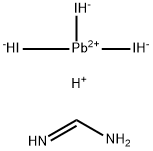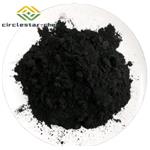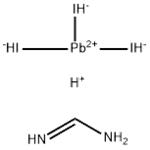Currently, the high-efficiency perovskite solar cells are predominantly fabricated with formamidinium lead iodide (FAPbI3), which exhibits higher thermal stability against decomposition into the secondary compound of PbI2, a broader absorption spectrum that extends further into the red, and an ideal bandgap (~1.4?eV) closer to the Shockley–Queisser optimum, as compared with the prototypical methylammonium lead iodide (MAPbI3). The superior optoelectronic properties of FAPbI3 originate from the high-symmetry cubic perovskite structure (black α-phase). At room temperature, the black phase, also known as α- phase, of FAPbI3, evolves towards the most stable non-perovskite hexagonal yellow δ-phase (δ-FAPbI3) because α-FAPbI3 is thermodynamically unstable at temperatures below 150 °C[1].
Formamidinium Lead Iodide has the advantages for:
High efficiency:The conversion efficiency of Formamidinium Lead Iodide has reached a high level of more than 25% in the laboratory;
Broad spectrum absorption: It can fully absorb the radiant energy of solar energy;
High stability:It has good stability and long service life;
Environmental protection: It contains relatively rich, extensive, accessible and environmentally friendly elements,.



